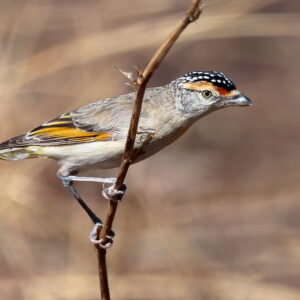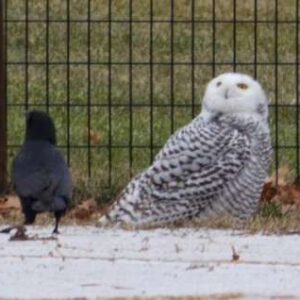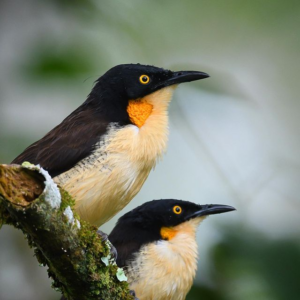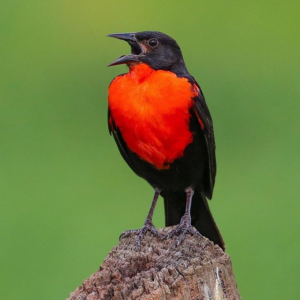A bird made highly conspicuous by strategically placed splashes of turquoise finished off with a luscious long tail.
Meet the Turquoise-browed Mot Mot
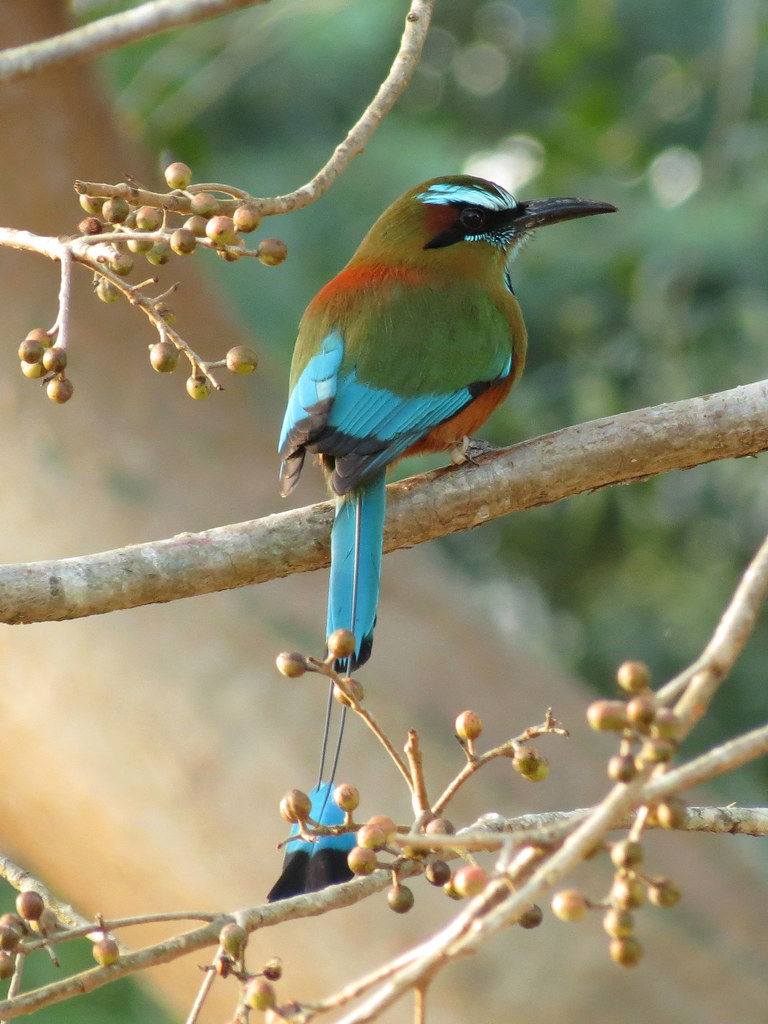
“Turquoise-browed Motmot” by treegrow is licensed under CC BY 2.0.
The turquoise-browed motmot (Eumomota superciliosa) also known as Torogoz, is a colorful, medium-sized bird of the motmot family, Momotidae. This bird is 34 cm (13 in) long and weighs in at 65 g (2.3 oz). It has a mostly grey-blue body with a rufous back and belly. There is a bright blue strip above the eye and a blue-bordered black patch on the throat. The flight feathers and upperside of the tail are blue. The tips of the tail feathers are shaped like rackets and the bare feather shafts are longer than in other motmots.
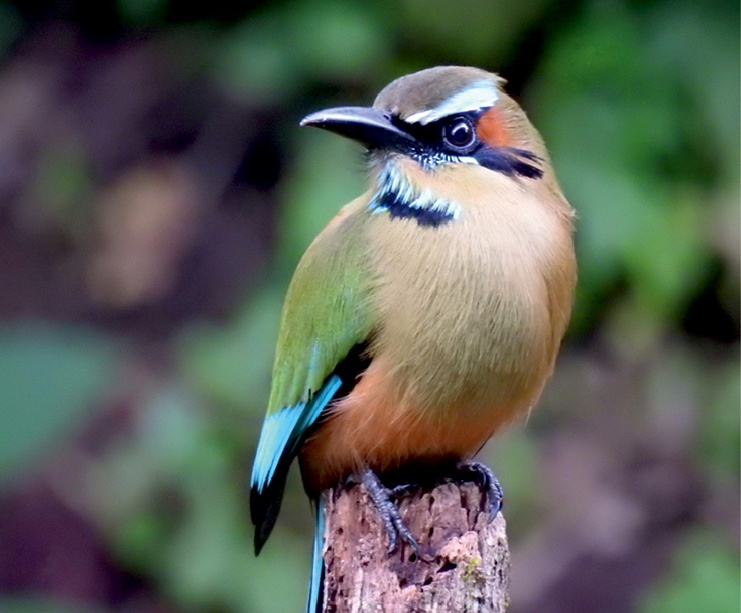
Photo Courtesy of Matteo Dal Zotto, Giuseppe Romeo, Luis A. Mena Aguilar, Dario Sonetti, Aurora Pederzoli – https://zookeys.pensoft.net/article/14606/CC BY-SA 4.0
Although it is often said that motmots pluck the barbs off their tail to create the racketed shape, this is not true; the barbs are weakly attached and fall off due to abrasion with substrates and with routine preening.
Both sexes look similar, both having that elaborately plumed long racket-tipped tail.
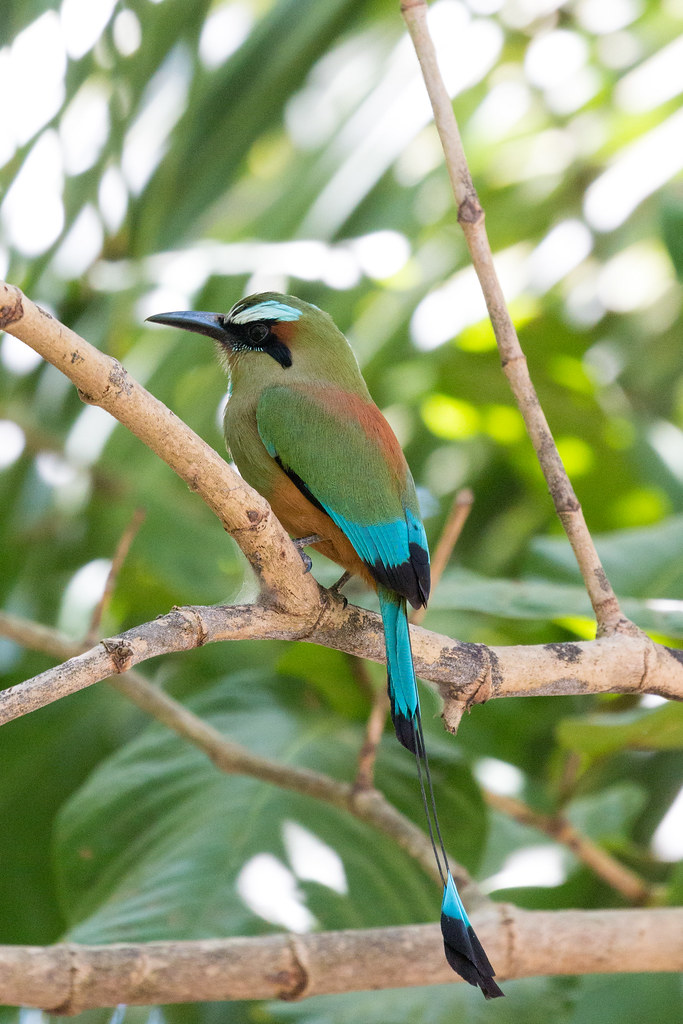
“Turquoise-browed Motmot [15/100]” by timsackton is licensed under CC BY-SA 2.0.
This bird inhabits and is endemic to Central America, all the way from south-east Mexico (mostly the Yucatán Peninsula), down to Costa Rica.
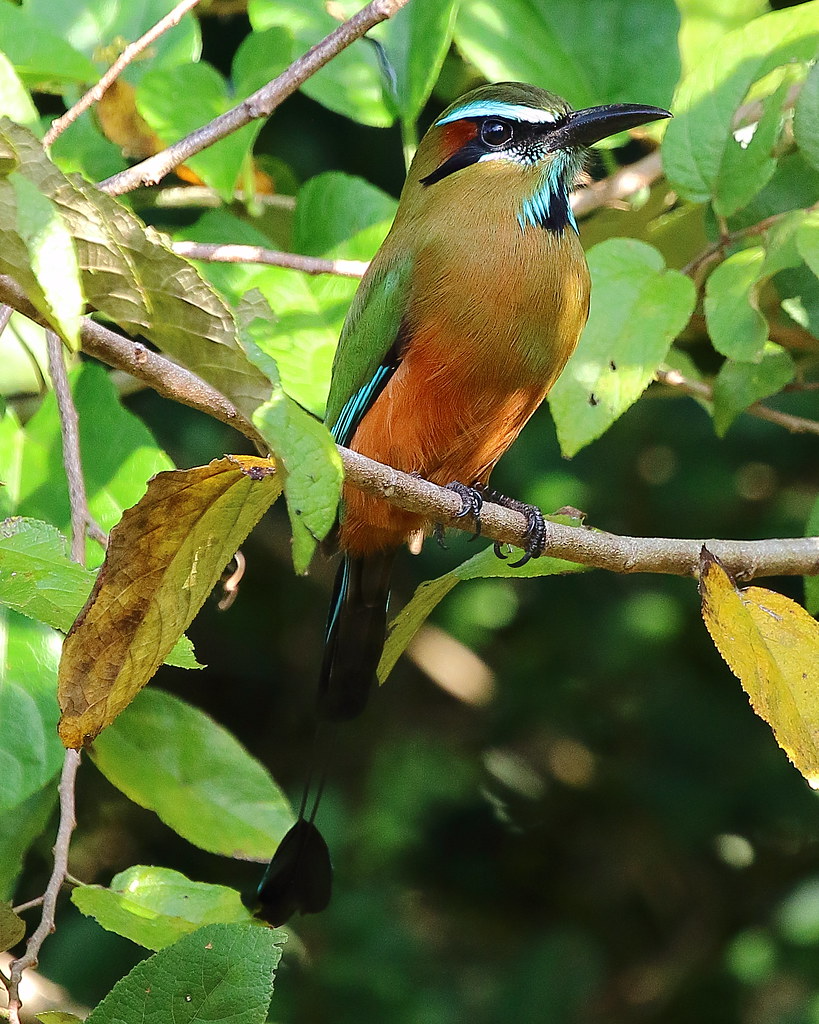
“Turquoise-browed Motmot” by ryanacandee is licensed under CC BY 2.0.
Turquoise-browed momots like to live in fairly open habitats such as the forest edge, gallery forest, and scrublands.
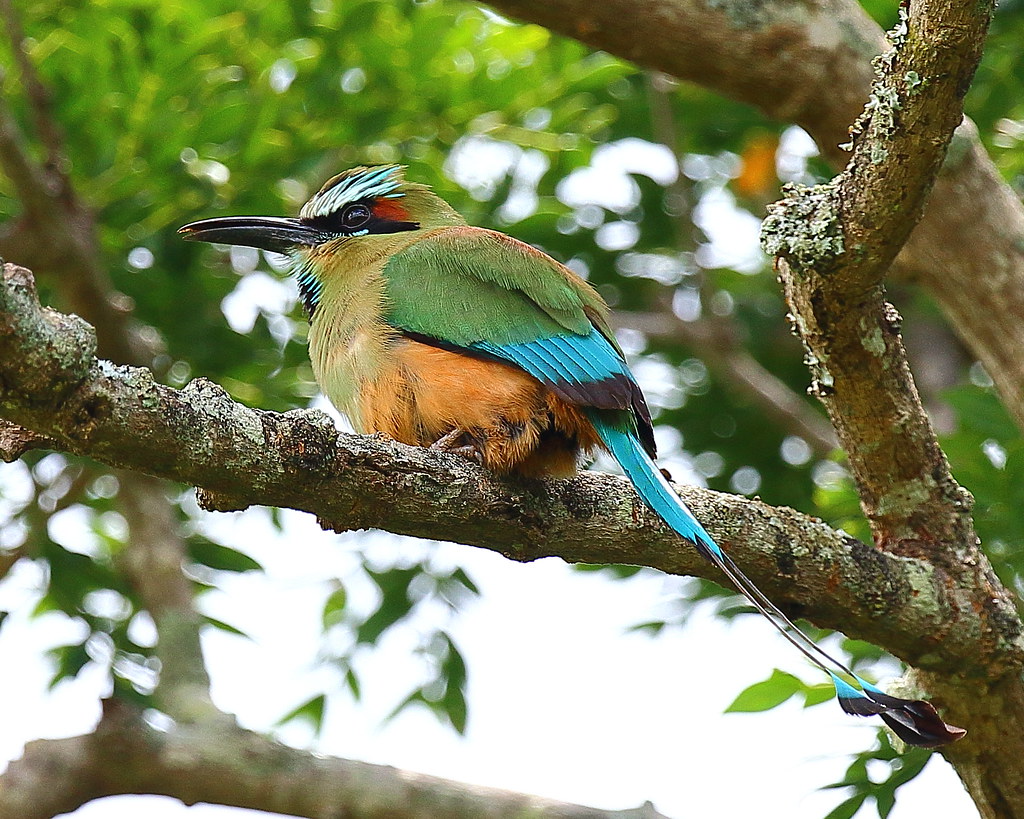
“Turquoise-browed Motmot” by ryanacandee is licensed under CC BY 2.0.
Far more conspicuous than other motmots, Turquoise-browed motmots are often seen perching in the open on wires and fences. From these perches, it scans for prey, such as insects and small reptiles.
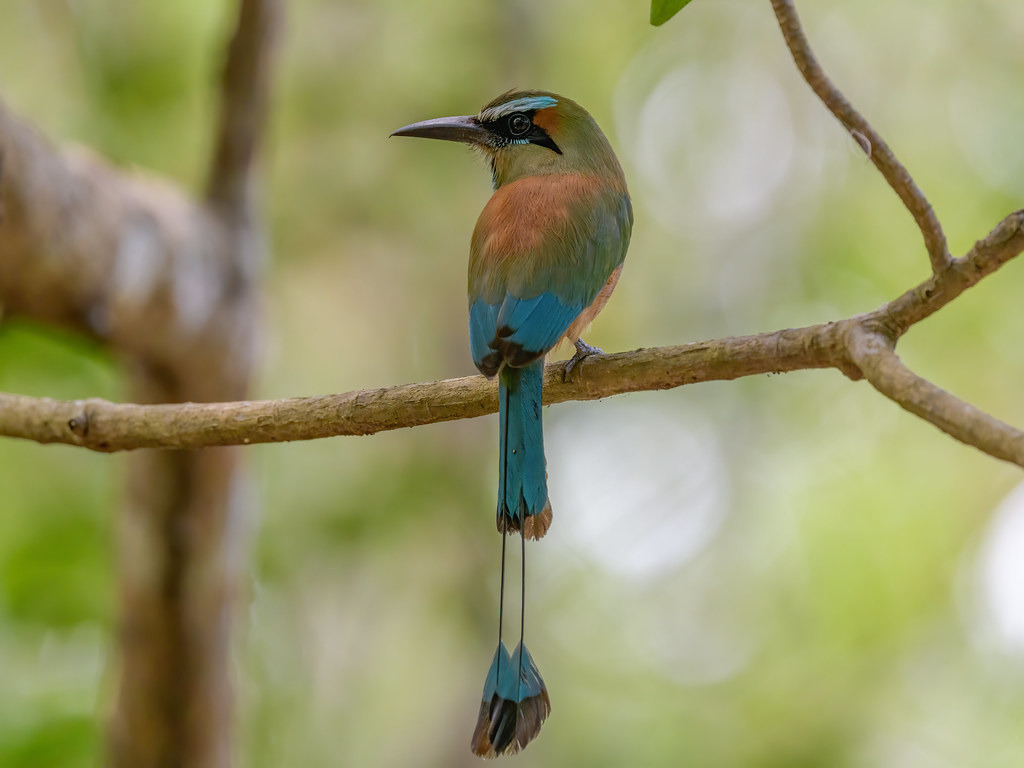
“Turquoise-browed Motmot” by Becky Matsubara is licensed under CC BY 2.0.
During the breeding season, 3 to 6 white eggs are laid in a long tunnel nest in an earth bank or sometimes in a quarry or fresh-water well. Unlike most bird species, where only males express elaborate traits, the turquoise-browed motmot expresses the extraordinary racketed tail in both sexes. Research indicates that the tail has evolved to function differently for the sexes. Males apparently use their tails as a sexual signal, as males with longer tails have greater pairing success and reproductive success.
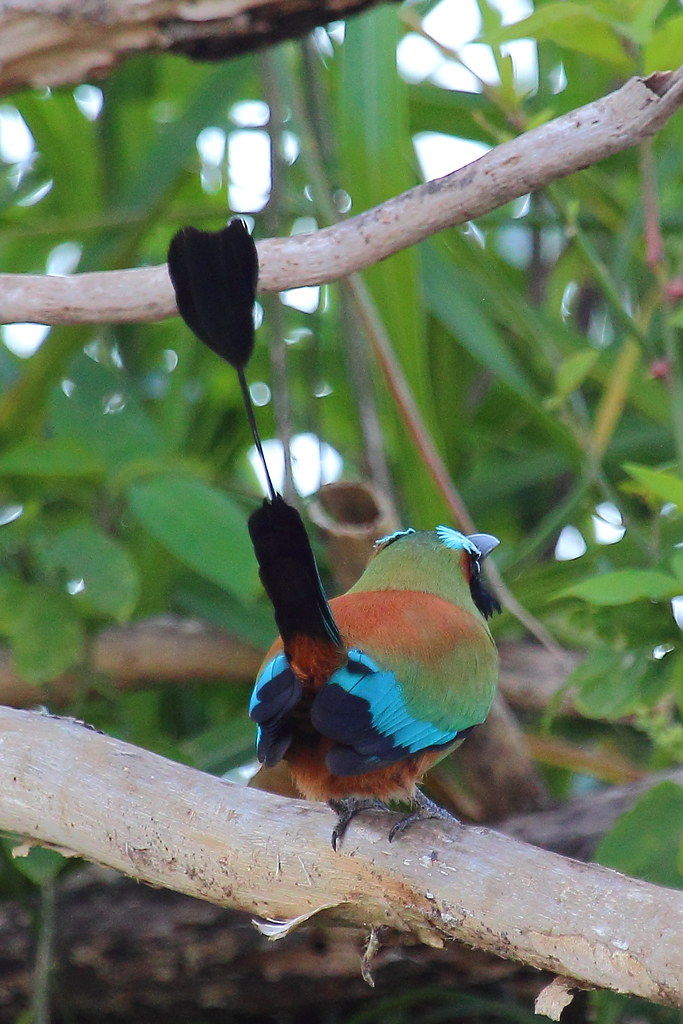
“Turquoise-browed motmot” by ryanacandee is licensed under CC BY 2.0.
This bird is regarded as of least concern on the IUCN red list.

Photo Courtesy of Len Blumin / CC BY 2.0
Watch this bird right here in the video below:
